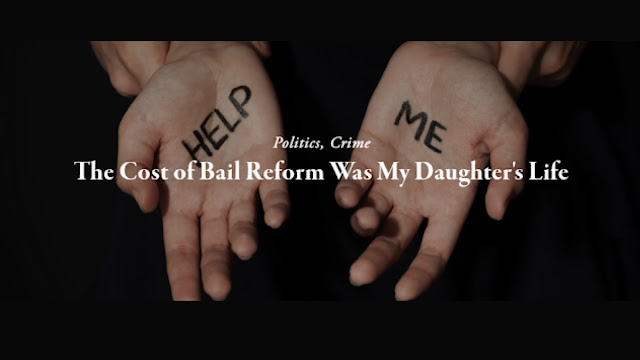Failure No. 3- Risk Assessments: Set Defendants Up For Failure
Failure No. 3: Risk Assessments Set Defendants Up For Failure
A system that gives a defendant a false sense of security to the extent that the defendant will not be held accountable for their actions is a system that sets the defendant up for failure because the defendant will come to conclude that it is okay to commit further crimes until the total number of crimes or the severity of the crimes grows to such a point that they are facing more substantial penalties.
The Vera Institute recently meet with a group of judges arguing for a greater use of pretrial release bonds. The representative made the statement that any reform of the criminal justice reform would result in an average failure to appear rate of approximately 40% and this number should be acceptable. This statement reveals a lot about where the advocates for change are and where they want to go.
People within the Criminal Justice System know that a 40% failure to appear rate would cause substantial damage to the system and in large counties this would cause such increases to the numbers of pending cases which could lead to the collapse of the criminal justice system as a whole. Is this an overstatement? No. In Harris County where a settlement of a federal lawsuit was entered with activist attorneys to institute many of these type changes the numbers of pending criminal cases in each of the misdemeanor criminal courts have doubled and this was before March of this year when the pandemic put a halt to court activity for a period of time. Additionally, in Harris County the commissioners court received a presentation before the pandemic which argued that the county should dismiss 12,000 to 18,000 criminal cases to prevent the complete collapse of the system.
Thomas Eberly of The Justice Management Institute stated, “I know it’s uncomfortable, but you’ve got to cut your losses.” Eberly argued that doing this would allow the county to deal with the backlog of cases.
Elberly essentially argued that the county had to deny justice to certain crime victims to be able to give some justice to others. This is what the advocates of criminal justice reform have wrought.
The recurring results of this expanded use of risk assessments is the lack of accountability. With a 40% failure to appear rate, the system would be overwhelmed with defendants missing court. How will the courts respond to all of these people missing court. Under Texas law, missing court is a crime in itself. Reformers not only advocate that new charges should not be filed, but also argue that there should be no consequences for the failure to appear; but instead, it should be an acceptable consequence of these reforms. This is ludicrous.
The same thing has been seen regarding "cite and release" situations. People who receive a citation fail to appear on average 40% of the time. These advocates argue that this should be acceptable and the defendant should not suffer any ill consequences from their failure to appear.
Without consequences, defendants get the message that they can commit more crimes. As defendants commit more crime then the courts have more cases to resolve. The criminal justice system has to choose whether to hold people accountable. If the court's do not then the defendants will see this as a further approval for them to commit more severe crime. The defendant will then enter a slippery slop where they will ultimately commit a crime where the system cannot turn away. As this point, who is responsible for the defendant's spiraling conduct? The system gave the defendant a false sense of security that it would not do anything to the defendant (as the resolution of cases get further backlogged and stalled).
By failing to hold the defendant accountable, the reforms actually had the opposite effect that was intended. The defendant is actually set up for failure. While the defendant might have changed his conduct by having to respond to his conduct early, since the system continuously overlooked theses issues, ultimately the defendant commits more severe crimes that the criminal justice system cannot continue to overlook.
Therefore, the reforms currently being advocated create a system that is much worse than the current system. The use of a risk assessment tool to make determinations about release and the expanded use of PR bonds will cause a spiraling increase in failures to appear. Once this happens the courts will be placed in the terrible position of trying to direct a run-a-way train. If the defendants are held accountable for not coming to court then their bonds will be forfeited and they may be held in jail until their cases are resolved. This would result in further jail overcrowding. If the courts continue to release the defendants, the message will be received that the defendants will not be held accountable and the defendants will see this as a green light to commit further crime. Eventually, they will commit more severe crimes with penalties being stacked on numerous other crimes putting the defendant in an even worse position and facing longer punishments.
The Four Failures of Risk Assessments:







Comments
Post a Comment